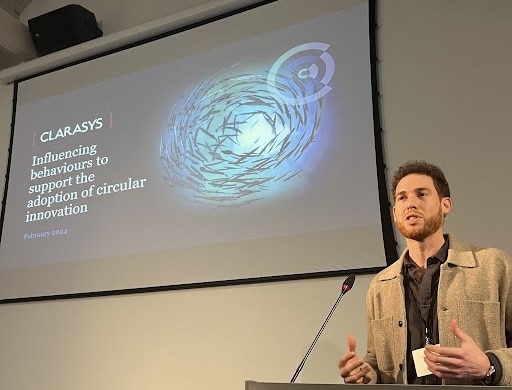What ESG challenges are the pharmaceutical industry facing and what can organisations do to accelerate sustainability?
ESG challenges and opportunities within the pharmaceutical industry

ESG challenges and opportunities within the pharmaceutical industry
What ESG challenges are the pharmaceutical industry facing and what can organisations do to accelerate sustainability?


Meet the author
The pharmaceutical industry faces significant sustainability challenges today. As one of the world’s least sustainable industries, it has a mountain to climb if it is to meet international targets. Clarasys consultant, Adam Said, investigates pharma’s current ESG efforts and looks to the future.
Following the COVID-19 pandemic, the pharmaceutical industry faced a rapid rise in demand. For any industry, a spike in demand brings huge challenges, but for an industry already behind the curve in environmental and social sustainability efforts, it has been an enormous test.
Pharma supply chain and procurement processes are notoriously energy intensive and inefficient, producing 55% more greenhouse gas emissions than the automotive industry (1), and using more than 23% of the world’s water supplies (2). As it stands, around 100kg of waste is generated per 1kg of drug produced (3), making the drug development process both harmful to the environment and cost inefficient. Socially, pharma also lags behind many other industries, with less than 10% of all CEO and leadership positions being held by women (4).
End-to-end, pharma’s drug discovery and development lifecycle can be broken down into five key stages, each of which carries its own unique set of ESG challenges (Table 1).
Table 1. The five key stages of the pharmaceutical supply chain and their most significant ESG challenges.
| Stage | Description | Significant ESG challenges |
| Research and development (R&D) | Sourcing raw materials for drug development (APIs and excipients). | Over 52 megatonnes of greenhouse gas emissions produced primarily by long-distance transport of R&D materials – 90% of the world’s APIs are sourced globally from China and India (4). The cold chain transport of pharmaceutical products costs around $10.6B per annum (5). |
| Clinical development | Manufacturing (processing, testing, and packaging) | Rigorous regulations govern the microbial contamination and safety of medicinal products. This largely restricts material use to non-recyclable plastics and foils. Consequently, ~100,000 tonnes of plastic packaging are produced for medicines globally per annum (6). |
| Manufacturing and supply chain | Distribution (wholesale distributors, labelling, serialisation, and tracing) | Many pharmaceutical products must be stored under strict Room Temperature and Pressure (RTP) conditions, making distribution and storage an energy-intensive process. Over $1B is spent on energy consumption in the pharma industry annually (7). |
| Commercial | Delivery (batch processing and delivery across retail pharmacies, hospitals, and clinics) | |
| Post-market surveillance and patient support | Ensuring safety and efficacy of patient therapy | <20% of all FDA-approved drugs produced between 2014-2021 had sufficient clinical trial data to accurately report benefits and side effects for black patients due to the lack of diversity at clinical trial stages (8). This combined with the lower accessibility of medicinal products in low-income countries due to patents contributes to the global health equity crisis (9). |
The status quo
The pharmaceutical industry has struggled to keep up with other industries in the sustainability stakes. As international bodies such as the UN introduce new initiatives and targets, the pressure mounts for pharma companies to invest in more sustainable, yet cost-efficient ways of operating.
By 2028, pharma companies will be required to report the carbon footprint of every product on the market (10). This is a significant development in waste management law and a sign of future sustainability initiatives to come. Recently, we have seen big players shifting towards ESG investments; most notably, AstraZeneca is working towards 100% use of renewable energy by 2025 (11). Larger companies have a wealth of resources to help them meet new targets. However, for many smaller companies in the market, this is a problem.
Accelerating sustainability efforts
To accelerate sustainability efforts, we believe the industry needs to do more work in the following areas:
- Foster a culture of collaboration across the industry and with sustainability organisations. Collaboration is needed throughout the industry to ensure consistent efforts. Organisations that specialise in ESG can apply their work to the different sectors of pharma, sharing ideas and best practice.
- Greater adoption of research and innovation. Whilst a lot of work has been done around the research and innovation of sustainable solutions against Pharma’s biggest challenges, there is still work to be done around the investment and greater adoption of these solutions across the industry.
- Identifying pharmaceutical needs versus wants. Organisations need to look at existing regulations, and profit margins, and identify what is essential to ensure compliance and prosperity and what is not.
- Stricter regulations around packaging and waste management. As part of this, we can expect to see more conscious decision-making around the environmental footprint of pharmaceutical products, including new efforts such as increased circularity.
Building roadmaps and investment cases for sustainable development
In our experience, these are a few of the areas that we have considered when building roadmaps and investment cases for sustainable development within the pharmaceutical industry:
- Striking the right balance between regulatory compliance and innovative sustainability operations.
- Identifying the best new business and operational designs to provide an optimum revenue-generating model.
- Placing an emphasis on patient-centric design when looking to improve efficiency.
- Allowing for greater investment in ESG technology innovation, and waiving patents to ensure greater accessibility for all.
- Embedding circular infrastructure in line with regulatory compliance.
For organisations to achieve this, they need to:
- Understand the changes that can be made across operations, and how this will impact their revenue.
- Learn how they can support regulatory changes and comply with existing regulations.
- Collaborate and partner with other organisations to inspire change.
- Make a behavioural change around the commerciality of sustainability opportunities to think ‘long term’.
Conclusion
With the rising public interest and subsequent investments in sustainability across industries, the pharma industry lags behind. Being an industry built on innovation and purpose, we know through our own experience there is an ambition amongst business leaders in this sector to address ESG challenges. To catch up, industry leaders should consider these first steps:
- Reduce lag between industry regulations and global sustainability efforts.
- Increase adoption of ESG innovations by shifting focus from commerciality of current practice to future return on investment
- Increase collaboration across the pharma value chain and partner with outside organisations to synchronise and update sustainability efforts.
Get in touch to find out how we can help you with your sustainability challenges.

